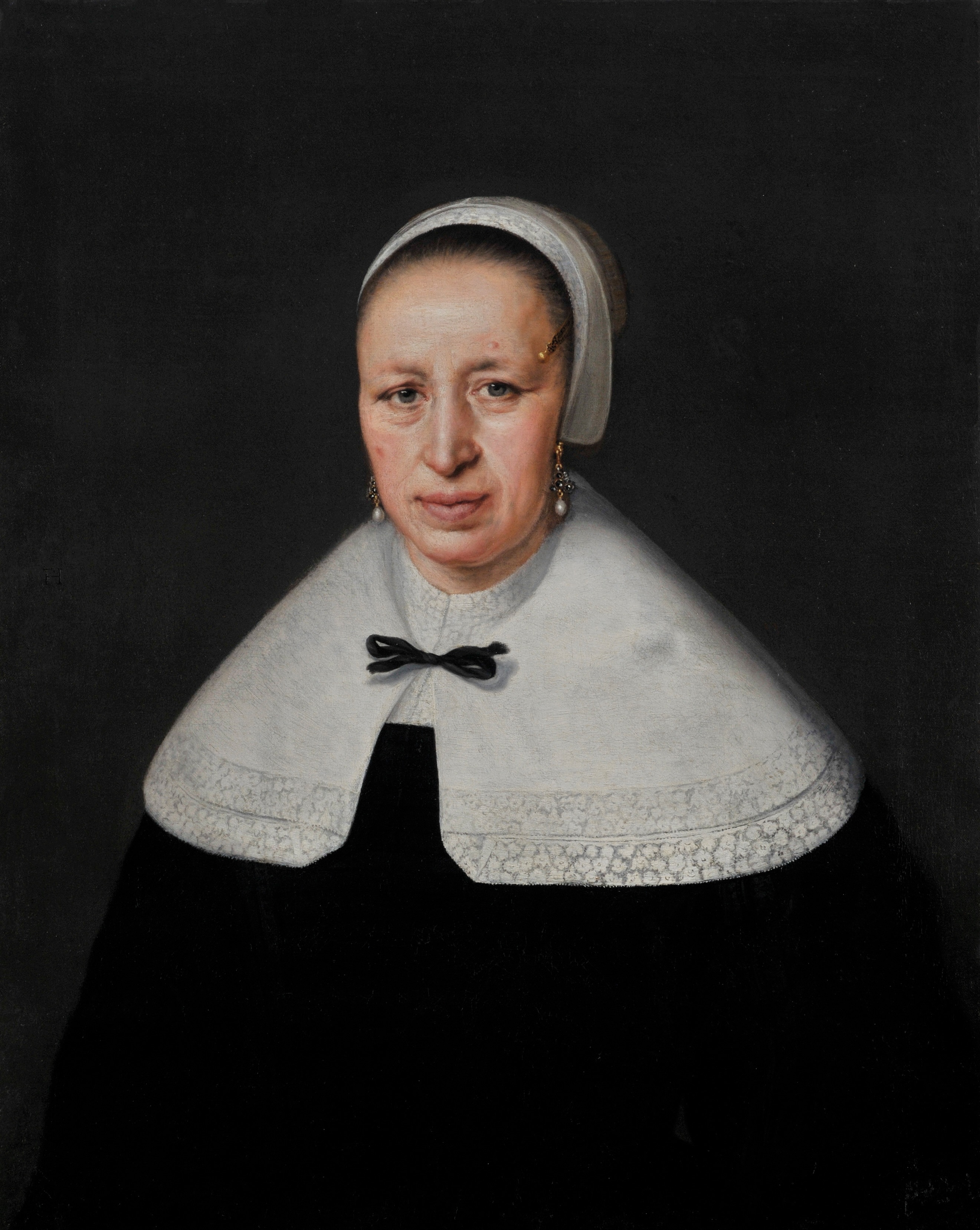Oil on canvas
74 x 60 cm.
(False) monogram FH
Art-historical texts and documentation by Rudi Ekkart and Claire van den Donk
The portrait of a middle-aged woman, which bears a false Frans Hals monogram, is of excellent quality but cannot be attributed to a specific artist. The woman’s sober attire offers little for a precise dating, as such caps, collars and bodices appear from the late 1640s onward. Nevertheless, the most plausible date for this portrait is between circa 1655 and 1660.
A work of excellent quality, an unknown master
The painting features stylistic similarities with works by artists associated with the so-called Rembrandt School. However, the term in this context refers not to the small group of artists who definitely or likely trained in Rembrandt’s studio, but rather to the broader interpretation employed by the scholar Werner Sumowski in his standard work Gemälde der Rembrandtschüler. Sumowski’s study reveals numerous interesting parallels, such as the signed 1662 portrait of Elisabeth Pieters in the Royal Collections in Stockholm by Gerbrand van den Eeckhout (1621-1674), though that work is of a considerably smaller format.1There are also evident similarities with early works by, and attributed to, Nicolaes Maes (1634-1639). These include, among others, the signed and dated 1656 Portrait of a Woman in the Fine Arts Museums in San Francisco as well as several other portraits attributed to Maes, which were later doubted by the Maes expert Léon Krempel.2
To better situate the present painting, it is necessary to consider a broader circle of potential artists. For example, there are noteworthy affinities with certain works attributed to Jacob van Loo (1614-1670), painted around 1650. However, due to questions surrounding these attributions, they offer little support for identifying the painter of the present work.3
Given the uncertainties outlined above, an attribution to any of the aforementioned artists – or to another painter – would be premature. Without a signed work that reveals a fully convincing parallel, the authorship of this finely painted portrait must remain undetermined.
A personal note from the gallery
‘This is one of my personal favourites. She’s painted with such honesty: no flattery, even her tiredness and flaws are there. That makes her so real, so human. It’s a shame we don’t yet know who she is. The quality of this work, with its subtle play of light and shadow, places it close to the great names of Rembrandt’s circle. Strong, sober portraits of this calibre are increasingly scarce on the market.’
Jaco Pieper, owner Argento Gallery
Provenance
Sale Saint-Germain-en-Laye (SGL / Frédéric Laurent de Rummel and Peggy Savidan), February 16, 2025, lot 84 (as Ecole hollandaise).
Notes
1. Copper, 31 x 23 cm. Werner Sumowski, Gemälde der Rembrandtschüler, vol. II, Landau (Edition PVA) 1984, p. 751, no. 531 and p. 894, plate 531.
2. Sumowski, see note 1, vol. III, 1987, p. 2026, no. 1389, 1385 and 1387; p. 2115, plate 1389, p. 2111, no. 1385 and p. 2113, plate 1387; León Krempel, Studien zu den datierten Gemälden des Nicolaes Maes (1634-1693), Petersberg (Michael Imhof Verlag) 2000, pp. 285-286, no. A 22, pp. 263-364, no. E2, p. 365, no. E13; plates 66, 412 and 417.
3. See: David Mandrella, Jacob van Loo 1614-1670, Paris (Arthena) 2011, pp. 131-132, no. P.17; p. 142, no. P.35. Judith Noorman, Art, Honour and Success in the Dutch Republic. The Life and Career of Jacob van Loo, Amsterdam (Amsterdam University Press) 2020, p. 155, nos. 83 and 84 (among paintings attributed to Jacob van Loo).




